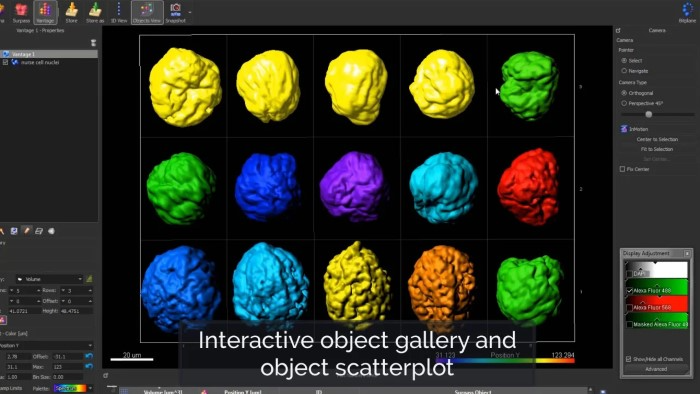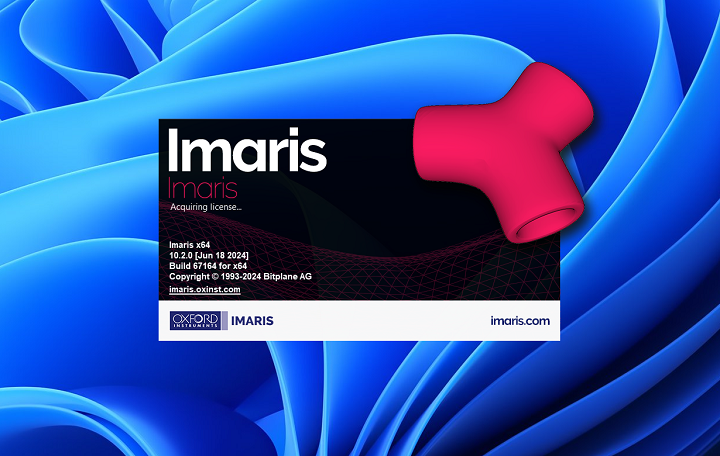Science starts with looking. Really looking. Through a scope, you see life move. Cells. Tissues. Tiny stuff. But sometimes it’s too complex. Too small. Too much data. That’s where Imaris helps. Imaris helps you turn tiny images into 3D views. It’s for people who use fancy scopes. The software takes your data and builds 3D models. Even 4D ones (that means with time). It’s like giving eyes to science. You don’t just see cells. You explore them. Spin them. Measure them. Track how they move. Let’s see what Imaris is. How it works, why labs use it.
What Is Imaris Software

Imaris is 3D viewing software for biology. Oxford makes it. They’re known for science tools. The software helps you understand scope data by making clear visuals.
When you collect scope data, it’s just flat images. Hard to read. Imaris takes those and builds 3D models. You can zoom in. Rotate. Slice through layers. Track changes over time.
People use it for cell studies. Brain research. Cancer work. Plant science. And more.
Who Uses Imaris
Imaris isn’t for everyone. It’s for scientists who work with tiny images. Like:
• Brain scientists looking at tissue
• Immune experts tracking cells
• Cancer teams studying tumors
• Plant people checking roots
• Drug companies testing new stuff
If you work with scope images, Imaris helps you see better.
Main Features of Imaris Software
Imaris has many tools. Here are the big ones.
3D and 4D Viewing
The best part? 3D and 4D views. Load your images. See them as 3D right away. Got time-lapse data? Imaris adds time. Watch things move or grow live.
This helps you see how stuff changes inside living things.
Surface and Volume Tools
You can make “surfaces” to show cell edges. Imaris colors them nicely.
Volume shows everything inside. Not just outside. See through the whole thing.
Object Tracking
Imaris tracks moving objects. Like, if you study white blood cells? It follows them for you.
Measure how far they go. How fast. What they touch. Saves hours of work.
Measuring Tools
Need numbers? Imaris gives them. Measure length. Area. Volume. Brightness. Distance.
This turns pictures into real data. Great for papers.
Spot Finding
Imaris finds small points in images. Like particles. It marks them for you.
Makes counting easy. And accurate.
Line Tracing
Perfect for neurons or vessels. Imaris traces long, thin things through 3D space. See how brain cells connect. How blood flows.
Overlap Analysis
When two markers meet in images? Imaris shows where. Useful for finding protein interactions inside cells.
Movies and Animation
Make smooth videos of your 3D data. Rotate. Zoom. Fly through samples. Export as videos.
Show your work at meetings. Make science look cool.
Data Export
Imaris works with all scopes. Leica. Zeiss. Olympus. Nikon. Save and share easily.
Works on Windows and Mac. Export data for other tools too.
How Imaris Works
Imaris handles big files. Here’s how:
• Load them into Imaris
• Software stacks them into 3D
• You explore, rotate, zoom
• Add tools like tracking
• Save your results
Even huge datasets run fast. Smart processing helps.
Benefits of Using Imaris

Imaris does more than look pretty. It gives meaning to data.
Clear Views
Complex data becomes clear 3D. See things 2D hides.
Saves Time
Manual work takes hours. Imaris does it fast. Like counting cells.
Accurate Results
Get precise measurements. Good algorithms mean reliable data.
Easy to Learn
It’s advanced but simple. Learn quickly with practice.
Great for Sharing
Turn research into visuals others get. From journals to students.
Team Work
Labs worldwide use it. Share data. Compare. Work together.
Read More: Conga Software
Applications of Imaris Software
Imaris helps many research areas:
- Cell Biology: Track cell division. See how cells move.
- Brain Science: Map neurons. Measure connections.
- Cancer Research: Watch tumor growth. See drug effects.
- Immune Studies: Track immune cells during healing.
- Development: Follow embryos as they grow.
- Plant Science: Check root patterns. Leaf growth.
- Teaching: Show students 3D bio data.
Why Scientists Love Imaris
Scientists like Imaris because it’s pretty AND accurate. You don’t just analyze. You see life itself.
Works with most scopes. Makes big data easy. Always gets updates for new tech.
Users love:
• Great visuals
• Fast rendering
• Good results
• Works with all formats
• Nice tech support
How to Get Started
To start with Imaris, you need a license. Here’s how:
• Get a demo or trial
• Install on your computer
• Try sample data (they give you files)
• Learn basic tools first
• Try your own data
Oxford gives tutorials. Webinars. Guides. Very beginner-friendly.
Tips for Using Imaris Well
• Use auto tools before manual
• Keep folders organized
• Use colors to make things clear
• Save your work often
• Watch tutorial videos
Imaris vs Other Tools
Other tools exist. Like Fiji. Arivis. Amira. But Imaris stands out:
• Better 3D engine
• Handles huge data smooth
• Built-in animation tools
• Better support
ImageJ is free but needs plugins. Imaris has everything ready.
Challenges with Imaris
No software is perfect. Some issues:
• Needs strong computer
• License costs money
• Takes time to master
But for pro research? Worth it.
The future looks good. With AI coming, Imaris gets smarter. Soon it might find structures alone. No setup needed. Cloud sharing is coming. Faster rendering too. Labs could work together from anywhere. Focus is on speed. Auto features. Team work. Help scientists discover faster.
Imaris changes how scientists see. It turns complex data into colorful 3D models. You can explore. Measure. Understand living systems better. Study cells? Neurons? Plants? Imaris makes your work clear. And powerful. Saves time. Reduces errors. Creates visuals that tell stories. Science isn’t just numbers. It’s seeing what others can’t. With Imaris, that vision becomes real. And beautiful.


